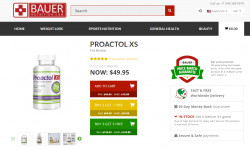Gout is a disease caused by high uric acid levels in your blood. It’s a form of arthritis that induces sudden swelling attacks and extreme pain by forming tiny crystals inside the joints.
Our body naturally produces uric acid by breaking down a chemical called purine, which is also present in certain foods, and it’s eliminated by urine.
The gout treatment is mainly with medication, but some lifestyle changes like keeping a low-purine diet can help you reduce gout attacks or even prevent this from happening more often.
1. Low-purine Diet
The primary purpose of this diet is to reduce the consumption of food and drinks with high purine content and help you prevent, or reduce, the frequency of gout attacks.
It is designed to help you achieve good eating habits and a healthy weight.
2. What to Eat When You Have Gout
The foods listed below can help ease your symptoms.
Cherries
Cherries have been known to reduce serum uric acid levels, diminishing the risk of a flare-up. They are full of fiber, low in calories, and have nutrients, minerals, vitamins, and anti-inflammatory properties.
You’ll get magnesium, potassium, calcium, and antioxidants like beta-carotene. One cup a day will be enough to enjoy all its benefits. Keep in mind that eating cherries in excess can cause allergic reactions.
How to Eat Them

Eat it fresh or frozen, turn them into a milkshake, or make a cherry ice cream. Cherries are a very versatile fruit, just watch your sugar intake.
Beans
Legumes such as beans or fava beans do have a high purine content. Still, studies suggest that due to their high fiber content, a lot of it is excreted, so it is much safer to eat than meat, which also contains high purine levels without the fiber benefit.
They also help protect the body against high cholesterol, heart disease, digestive illnesses, and high blood pressure.
How to Eat Them
Add them to salad or bowls, make a bean spread, try making a soup, or mix it with pasta. You may enjoy a plant-based burger or make some tacos and quesadillas if you’re a vegetarian.
Dairy Products
Dairy products are also good for gout, particularly low-fat skim milk. Studies suggest it helps reduce inflammation caused by those monosodium urate crystals, which causes gout flare-ups. It also prevents you from having symptoms eventually.
Skim milk is one of the dairy products with fewer calories and high amounts of vitamins. It has fantastic benefits: good bone mineral density improved muscle function and helps you regulate cholesterol, blood pressure, and blood sugar levels.
How to Take It
Take one glass of skim milk whenever you like. Many people prefer to drink it with their morning coffee, while others may prefer it in the afternoon tea.
Coffee
Every day, 1.6 to 2 million cups of coffee are consumed worldwide, 65% of those being morning coffee. This is more than 164 million bags every year.
Drinking coffee is potentially beneficial for gout because it helps to block the enzyme that breaks purine into uric acid. Therefore, it keeps your uric acid levels low.
If you’re one of the many people needing a booze of caffeine every morning, remember to take a glass of water with it. Despite its many health benefits, coffee can cause dehydration if not correctly balanced with food and water.
How to Take It

You can drink your coffee as you’re used to, but try to avoid combining it with milk and sugar. If you need to, use skim milk, a natural sweetener, and a good breakfast.
Soy Products
Soy products like tofu and tempeh have moderate amounts of purine. It was initially thought that soy products should be avoided, because of their purine content.
Research has suggested that the amount it raises your serum uric acid levels is very minimal, and it’s clinically irrelevant. Therefore, it’s been said that it doesn’t promote gout attacks. Try to eat it with caution.
How to Eat Them

Tofu: Boiled, raw, pure, or battered. Tofu is easy to prepare and combine with other products.
Tempeh: pan-fried slices, sandwiches or mix it in a salad. Look out for the oil and sauces. Because of tempeh’s sponge texture, it can easily absorb them.
Nuts
Nuts are a great snack to eat anytime and have a long list of benefits when it comes to easing the pain or preventing a gout attack.
They can lower the risk of high blood pressure, reduce inflammation, decrease the risk of blood clots and low unhealthy cholesterol levels, and provide unsaturated fat, omega-3 fatty acid, and fiber.
How to Eat Them
You can add them to steamed vegetables, or as a crunchy snack for the day. Top your salads or use them for dessert. Nuts are simply, one of the most versatile products to use in the kitchen.
Water

Increasing your water intake can also help you reduce gout attacks, especially when drinking eight cups of water every day.
A study was conducted where patients sat in a sauna to test their uric acid levels. It was reported that these levels increased, suggesting dehydration contributes to provoking gout attacks.
Dehydration can also lead to severe complications, causing seizures, kidney failure, headaches, and dizziness.
If like many people, you keep forgetting to drink water regularly, use mobile apps to help remember to consume some water throughout the day. Water is essential. Stay well-hydrated.
3. What Not to Consume When You Have Gout
Here are a few things to stay away from to prevent gout flare-ups:
Alcohol

Not every alcoholic drink contains high amounts of purine, but alcohol doesn’t allow your kidneys to eliminate uric acid, keeping it in your body where it will continue to accumulate.
Reduce the consumption of alcohol in your daily life to prevent gout attacks. If you’re already having one, eliminate it for a while.
High Fructose Corn Syrup
This is a common sweetener that you can find in the following products: candy, sweet packages, soda, juice drinks, fast food, sauces and condiments, ice cream, jam, preserved fruits, bread, and crackers.
High levels of blood sugar can lead to kidney disease, vision and nerve problems, heart disease, and strokes. Try to eliminate most of them from your diet.
Organ Meats
Despite their incredibly healthy and nutritious properties, vitamins, and minerals, organ meats (liver, kidneys, and brains) have a high purine content, and their consumption should be avoided or eliminated, especially when trying to prevent gout attacks.
Game Meats
Meat from wild animals like veal, venison, and goose, contains higher protein levels than other sources, which can increase blood uric acid levels.
Game meats have low rates of fat and calories than domestic meat. Like any other type of meat, the best thing to do is reduce its consumption to keep enjoying its benefits without representing a significant threat to your health.
Seafood

Seafood is well known for its excellent properties like providing high amounts of omega-3 to your body. They are also rich in calcium, potassium, magnesium, and other minerals, which you may consider a good choice.
Sadly, seafood like scallops, herring, tuna, codfish, haddock, and trout should also be avoided because of its significant amount of purine.
Red Meat
It is not about never eating them again, but remember to look out for how much red meat you are eating. Pork, lamb, bacon, and beef can be eaten in small portions, but being high sources of protein, they can increase your uric acid levels.
When eating meat, always remember to include high amounts of fiber in your diet to help you balance its effects on the body.
Turkey
Turkey is one of the star ingredients in the fitness world because it is low-fat and rich in vitamins and minerals. Sadly, it is also one of the main products to avoid when you have gout because it’s one of the most high-purine meats you can find.
Eating processed deli turkey, which is meat that has been transformed to improve the presentation or enhance flavor, can rapidly increase your purine levels and increase the risk of having gout attacks.
Yeast

Yeast and all forms of yeast extract can increase uric acid levels and trigger gout attacks, headaches, migraines, or even facial flushing. If introduced too quickly in your body, yeast can cause very unpleasant digestive side effects.
Try limiting its consumption or avoid this product completely to reduce the possibility of gout flares.
4. Additional Benefits of a Low-purine Diet
A low-purine diet doesn’t just help ease the symptoms of gout. It can also provide the following benefits:
Weight Loss
Being overweight helps to increase the risk of developing gout among many other possible complications, like high blood pressure or type 2 diabetes.
Studies suggest that reducing your calorie intake also lowers uric acid levels, which eventually reduces the number of gout attacks. Combine this diet with physical exercise to get faster results in losing some extra pounds.
Reduced Medication
Diet will never be as effective as medication when it comes to treating health issues and should never be replaced by it. However, taking good care of what you eat may contribute to minimizing your medication intake.
5. The Downside of the Low-purine Diet
This is a long-term lifestyle so it’s limiting. If like many people you are used to consuming high amounts of alcohol, sweets, and sugar, it may be challenging or even unrealistic to adjust your all-life habits to this new condition. Just remember, you must stick to your diet to enjoy its benefits.
Seafood is one the best omega-3 sources in the world and the low purine diet limits it very much. Many people around the globe do not consume enough omega-3 from natural sources, so you may want to consider taking fish-oil supplements to revert this.
A low-purine diet is not a cure. It can help lower uric acid levels but will never be as effective as medication. The best you can do is always combine the two solutions for better results.
Many people claim that following a diet isn’t as good enough as taking medication for it, and it’s not worth the trouble, but even taking only medication isn’t enough to fight gout attacks.
In situations like these, you may be proactive and try something to reduce the symptoms or prevent gout attacks.
6. Frequently Asked Questions
6.1 Is There a Cure for Gout?
Unfortunately, there isn’t a known cure for gout. Once you get diagnosed and treated by a healthcare provider to lower your uric acid levels and follow all recommendations, you’ll experience fewer attacks, but that’s the best it can be expected.
6.2 Can Gout Be Prevented?
To prevent gout flares limit how many drinks and high-purine food you are consuming. Drink lots of water to stay hydrated and help your kidneys to work better.
Have good sleeping habits, reduce any risk of obesity, and exercise regularly, especially your joints. Remember, this is a chronicle disease that everyone is exposed to.
This condition affects over 5% of the world’s population, especially men over 30 and menopausal women, and it is more common to see it in men than women.
Because it can be excruciating and debilitating, treatments are available to help ease the symptoms and prevent them from happening again.
6.3 How Do I Know If I Have Gout?
Gout attacks usually happen at night. You’ll notice sudden and very intense pain in the affected joints. Usually, people can experience quick changes from excruciating pain to having no symptoms.
If you think you can have gout and need a diagnosis from a professional, visit your nearest healthcare provider as soon as possible.
6.4 What Should I Do When Having a Gout Attack?
The best course of action is to manage your symptoms.
- Drink a lot of water on the first day.
- Try elevating your joints as often and higher as you can.
- Avoid intense physical activities or exercise.
- Applying ice to the affected joints will help with the pain and is good to help lower the inflammation. If you don’t have ice bags, you can put some ice in a plastic bag and wrap it in a small towel.
6.5 How Long Does a Gout Attack Last?
A gout attack can last from five to seven days depending on how well it is managed. After this time, it tends to get better. When treated immediately, there’s less possibility of long-lasting damage to the joints.
6.6 When Should I See a Doctor?
When something is wrong with our bodies, it is always a smart move to visit a healthcare provider. Many gout symptoms are the same as infections and both cases will need to be treated quickly.
If you are already diagnosed, contact your doctor if the frequency of the attacks increases or the symptoms are worse than usual.
6.7 What Should I Ask My Doctor about Gout?
It’s always better to check all medical information with a healthcare professional, so here are some suggestions on what to ask them:
- Is this gout or I’m having another type of arthritis?
- Will I need medication to deal with this?
- What can I do to prevent future attacks?
6.8 How Do Healthcare Providers Diagnose Gout?
The first step should be to visit your primary care provider, which may or may not refer you to a rheumatologist, a doctor specializing in this type of disease.
Doctors usually check many things before giving a diagnosis:
- Symptoms: they may ask you about how often they appear, and for how long. Make sure you can describe exactly what you’re feeling, and don’t leave anything out.
- Physical examination: to look for redness, warmth, or swelling.
- Blood work: to measure the uric acid levels in your blood.
- Imaging test: X-rays or MRIs of the affected joints.
- Aspiration: They might need to pull some fluids from the joint to look for uric acid crystals or a different problem (like bacteria) with the help of a microscope.
6.9 How to Live with Gout?
Most people find a balance between treatment and lifestyle. Tricks help with managing the symptoms and reduce the attacks’ frequency. They can come back in years, or even months if left untreated.
This is a treatable disease. If your uric blood level isn’t too high you may be less likely to experience gout attacks.
6.10 What to Expect If I Have Gout?
First, you need to know that symptoms come and go without warning. It’s better to get diagnosed by a healthcare provider as soon as possible, adjust to the new medication, get your diet corrected to be prepared for pain management, and have everything you can need at home to deal with the symptoms.
6.11 Can Gout Get Worse?
Gout can affect anyone, but people with previous health conditions are more likely to develop it. This includes blood cancer, kidney disease, hypertension, diabetes, congestive heart failure, and obesity.
You also have a more significant possibility of experiencing gout if you: eat too many animal proteins, especially shellfish, food that contains organ meat, and animal flesh, or take immunosuppressors or diuretic medication.
7. Final Thoughts
Gout is a treatable disease that does not represents a danger to your life, yet dealing with it is painful and stressful.
Make sure you do everything you can to help prevent an attack or ease it up when it comes.





![Salonpas Review [year] - Side Effects & Ingredients: Exploring the Efficacy and Safety of Salonpas Pain Relief Products Salonpas Review ([year]) - Side Effects & Ingredients](https://www.miriamwellness.com/wp-content/uploads/2023/11/Salonpas-Review-2023-Side-Effects-Ingredients-150x150.jpg)

![Rodan and Fields Acute Care Review [year] - Side Effects & Ingredients Rodan and Fields Acute Care Review ([year]) - Side Effects & Ingredients](https://www.miriamwellness.com/wp-content/uploads/2023/11/Rodan-and-Fields-Acute-Care-Review-2023-Side-Effects-Ingredients-150x150.jpg)